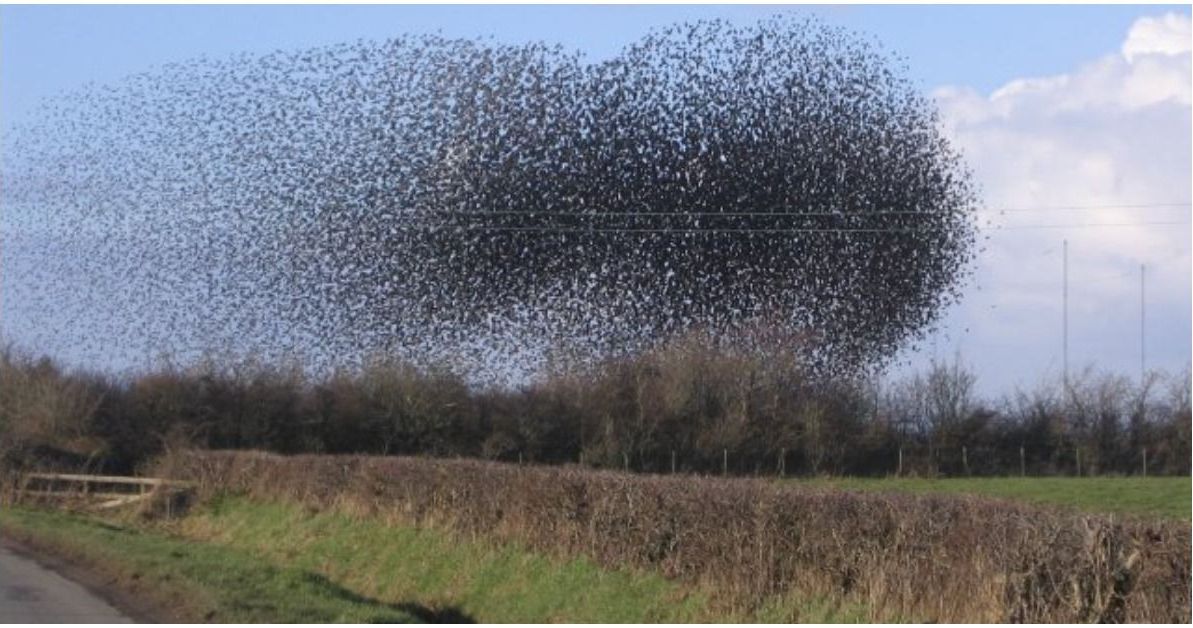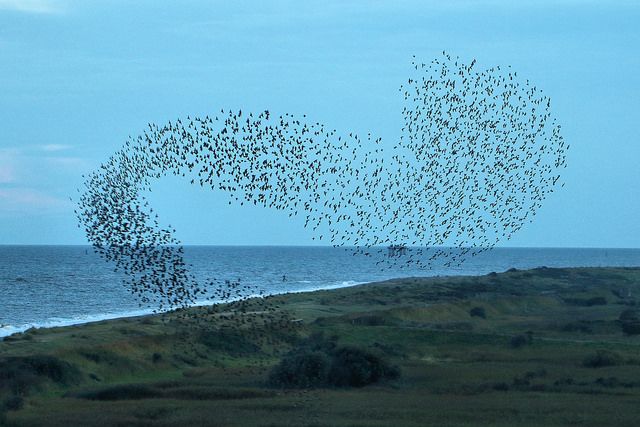There's no sight quite like an enormous flock of starlings swarming through the sky together.
While watching these massive and chaotic groups, called murmurations, it's easy to wonder how birds keep their sense of direction, and why they mumurate in the first place.
It turns out there's a clever reason for this hypnotic habit.
A magical murmurationLast Sunday, BBC Radio Wales producer Cat Peters filmed the most magical sight above Cosmeston Lakes in the Vale of Glamorgan - a stunning starling murmuration. We shared the video on Monday evening, both here and on the BBC Radio 4 page. In less than a week, it's been watched 1.5 MILLION times! Staggering.
Posted by BBC Cymru Wales on Saturday, December 17, 2016
Murmurations mostly happen at night, as the birds gather together before sunset. While it's common to see a few hundred birds turning in midair, sometimes there are thousands or even tens of thousands (although starling flocks around the world are shrinking dramatically).
Researchers say the swirling motions the flock makes are meant to confuse predators. In fact, if you see a murmuration it's often a sign that a hawk or other falcon is somewhere nearby.
So how do the birds keep from bumping into each other? Studies suggest the birds will direct traffic with a small group of close neighbors, talking to seven other birds at once as the entire flock steers through a giant game of telephone.
There might be other uses to a murmuration that we have yet to discover too. Some experts guess the birds could be sharing information about good places to roost or feed as they fly around.
Researchers in high tech fields are actually trying to copy the smooth, almost water-like movements of a murmuration, with hopes that it could be adapted for drones or computer programs.
Did you know, by the way, that starlings are not native to North America? They were introduced to New York City by Shakespeare fans in the late 19th century (the immortal bard mentioned starlings in Henry IV) and have been considered a "nuisance" bird ever since.
But it's hard to hold a grudge against these striking birds when you see the incredible midair ballets they can choreograph on the fly.
[H/T: National Geographic]


